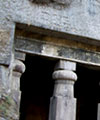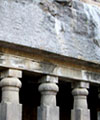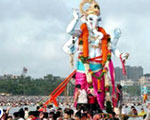| Encyclopedia of Tours and Travel to Maharashtra, featuring information on Fairs & Festivals, Wildlife, Excursion, Adventure and Weather of Maharashtra. |
 |
 |
 |
 |
 |
 |
 |
||
|
Mumbai City Weather
The period between October and February is the most pleasant time to visit Mumbai, when the city enjoys a balmy season of blue skies and a cool breeze. From March, the temperature gradually rises and the humidity reaches saturation point. It is very hot just before the monsoon rains break in mid-June. The rains last until September. They come as a welcome relief to Bombayites but when the drainage system fails everyone encounters difficulties getting around town. After the initial few days of flooded roads, however, Bombayites take the downpours and regular drenching in their stride. In September, the humidity and temperature begin to fall. Luckily Mumbai does not suffer from the incessant power cuts that plague other parts of India, so offices and hotels remain air-conditioned and bearable through the hot months. The city, being in the tropical zone and near the Arabian Sea, does not experience distinct seasons, but the climate can broadly be classified into two main seasons - the humid season and the dry season. The humid season, between March to October, is characterized by high humidity and temperatures of over 30 °C (86 °F). The monsoon rains lash the city during June to September and supply most of the city's annual rainfall of 2,200 mm (85 in). The maximum annual rainfall ever recorded was 3,452 mm (135.89 in) in 1954[5]. The highest rainfall recorded in a single day was 944 mm (37.16 inches) on 2005-07-26. Moderate levels of humidity and warm to cool weather characterize the dry season, between November and February. Cold northerly winds are responsible for a high wind chill factor during January and February. The annual temperatures range from a high of 38 °C (100 °F) to a low of 11 °C (52 °F). The record high is 43 °C (108 °F) and record low is 7.4 °C (45 °F) on 1962-01-22.
Climate and Clothing Temperature in Mumbai
Average Rainfall in Mumbai
Medicines There are a few things not to do which will make your stay more enjoyable. Never drink tap water (the flasks in hotel rooms contains filtered water and bottled water is now availble almost everywhere). Avoid salads, even in hotels, and do not eat the street food until you know how much you can afford to abuse your body for the sake of your palate. Time Zone
|
||||||||||||||||||||||||||||||||||||||||||||||||||||||||||||||||||||||||||||||||||||||||||||||||||||||||||||||
|
||||||||||||||||||||||||||||||||||||||||||||||||||||||||||||||||||||||||||||||||||||||||||||||||||||||||||||||
|
||||||||||||||||||||||||||||||||||||||||||||||||||||||||||||||||||||||||||||||||||||||||||||||||||||||||||||||
|---|---|---|---|---|---|---|---|---|---|---|---|---|---|---|---|---|---|---|---|---|---|---|---|---|---|---|---|---|---|---|---|---|---|---|---|---|---|---|---|---|---|---|---|---|---|---|---|---|---|---|---|---|---|---|---|---|---|---|---|---|---|---|---|---|---|---|---|---|---|---|---|---|---|---|---|---|---|---|---|---|---|---|---|---|---|---|---|---|---|---|---|---|---|---|---|---|---|---|---|---|---|---|---|---|---|---|---|---|---|---|